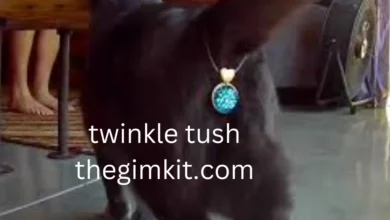The Importance of Hoofsheid

Welcome to the arena of hoof care, in which the health and well-being of our equine companions take a middle degree. Hoofsheid isn’t only a period; it is an important element of ensuring that our horses stay strong, wholesome, and glad. In this blog, we can delve into the importance of hoofsheid, explore commonplace hoof issues, talk about preventive measures, touch upon right care strategies and nutrient considerations, and highlight the significance of ordinary farrier visits – all aimed toward helping you emerge as a steward in your horse’s hooves. So saddle up as we embark on this adventure towards information and prioritizing the energy of our 4-legged friends’ basis – their hooves!
What is Hoofsheid?
Hoofsheid, a period not commonly heard in everyday conversations but paramount inside the equestrian world, refers to the general fitness and situation of a horse’s hooves. It encompasses various factors together with hoof power, flexibility, integrity, and resistance to unusual troubles like cracks or infections.
Essentially, hoofsheid is the foundation of a horse’s well-being – quite literally! Think of it as the strong base that helps your equine companion through all their sports; from grazing peacefully inside the pasture to galloping freely throughout open fields.
A horse with excellent hoofsheid is more likely to move simply and perform at its great. Just like human beings want sturdy bones for guidance, horses rely upon healthful hooves for stability and mobility. So next time you appreciate an imposing steed gracefully prancing about, recollect that it is their hoofsheid that plays a pivotal position in retaining them agile and sound.
Understanding the Role of Hoofsheid in Equine Health
Hoofsheid plays a critical function in the typical health and well-being of horses. It refers back to the situation of a horse’s hooves, encompassing their strength, flexibility, and resistance to commonplace problems like cracks or infections. Healthy hooves are essential for a horse’s mobility, stability, and comfort.
Proper hoof care is necessary to maintain hoofsheid. Regular cleansing, trimming, and shoeing help prevent problems together with thrush or laminitis. Monitoring your horse’s hooves regularly can catch any issues early on earlier than they enhance.
Understanding the anatomy of a horse’s hoof is prime to greedy the importance of hoofsheid. The hoof wall, sole, frog, and bars all work together to support the pony’s weight and soak up surprise whilst in movement.
By prioritizing proper vitamins and supplying proper supplements if needed, you can contribute substantially to your horse’s hoof fitness. A balanced weight loss program rich in critical nutrients like biotin helps sell robust hooves.
Incorporating ordinary farrier visits into your horse care is critical for keeping optimal hoofsheid. Farriers are educated experts who can address any trimming or shoeing needs unique to your horse’s hooves.
Common Hoof Problems and How to Prevent Them
Hoof issues may be a great concern for horse proprietors, impacting the general fitness and overall performance of their equine partners. One commonplace issue is thrush, a bacterial infection that prospers in wet, dirty environments. To save you thrush, it’s vital to keep your horse’s hooves smooth and dry by often cleaning them out.
Another commonplace trouble is hoof cracks, which could lead to lameness if left untreated. Maintaining proper hoof stability through ordinary trimming and shoeing by way of a professional farrier can help save your cracks from forming or worsening.
White line sickness is another condition that impacts the inner structures of the hoof. This fungal infection calls for diligent control practices like preserving the hooves easily and addressing any signs of separation among the sole and hoof walls right away.
Regular tracking of your horse’s hooves for any abnormalities or modifications in their condition is crucial in preventing greater severe troubles from growing down the road. By staying proactive together with your horse’s hoof care recurring, you can limit the hazard of these commonplace troubles bobbing up.
Proper Hoof Care and Maintenance
Proper hoof care and preservation are essential for the overall fitness and well-being of horses. Regularly cleansing your horse’s hooves is critical to prevent dust, debris, and bacteria from causing infections or soreness. Use a hoof pick out to carefully dispose of any buildup inside the crevices of the hoof.
Trimming your horse’s hooves every 6-8 weeks facilitates keeping proper stability and forestalls troubles like lameness or uneven put-on. It’s vital to have a professional farrier take care of this assignment to make sure it is performed efficaciously without causing damage.
Applying a moisturizing hoof conditioner can help hold the hooves supple and prevent cracking or drying out, especially in dry climates or during iciness months. Additionally, imparting sufficient turnout time on varied terrain can help wear down hooves and sell wholesome boom.
Regularly inspecting your horse’s hooves for signs and symptoms of thrush, abscesses, or different abnormalities is prime to catching capacity troubles early on earlier than they boost into more serious problems. Prioritizing proper hoof care will ultimately contribute to your horse’s typical soundness and comfort.
The Connection Between Nutrition and Hoofsheid

Proper nutrition performs a critical position in keeping hoofsheid in horses. Just like with people, what your horse eats directly influences the fitness of their hooves. Essential vitamins like biotin, zinc, copper, and omega-three fatty acids are key players in promoting sturdy and healthy hooves.
A balanced food plan that consists of excellent hay or pasture together with a reputable equine feed is crucial for supporting the greatest hoof increase and power. Ensuring that your horse receives the right nutrients and minerals will contribute to common hoof health.
Inadequate nutrients can cause susceptible and brittle hooves, making them greater prone to problems like cracks, chips, or infections. By supplying your horse with a nicely-rounded weight loss program tailored to their precise needs, you are investing in their hoof health for the longer term.
Remember that each chunk your horse takes has an impact on their hooves – so make sure they’re getting the nutrients they need to aid sturdy and resilient feet.
Importance of Regular Farrier Visits
Regular farrier visits are a vital aspect of maintaining hoofsheid in horses. Farriers play a vital position in making sure of the fitness and balance of hooves, which directly impacts the general well-being of the horse. By frequently trimming and shoeing hooves, farriers help prevent unusual issues including cracks, imbalances, and infections.
A skilled farrier can identify early symptoms of ability issues before they expand into extra serious conditions that could affect the horse’s performance or consolation. Additionally, right trimming via a farrier promotes healthy hoof increase and helps accurate movement and posture for the horse.
Establishing a regular timetable for farrier visits is key to preventing lengthy-time period hoof issues and making sure your horse stays sound and cushy. It is usually recommended to talk with your veterinarian to decide the perfect frequency of visits based totally on your horse’s individual needs.
Remember, investing in normal farrier care is an investment in your horse’s ordinary fitness and well-being.
Conclusion:
Hoof fitness is an important issue of average equine well-being. By prioritizing proper hoof care, staying proactive in stopping common troubles, keeping a balanced weight-reduction plan rich in essential nutrients, and scheduling ordinary visits with a professional farrier, horse proprietors can make certain their loved animals lead glad and healthy lives. Remember, wholesome hooves are the inspiration for a valid and thriving horse. So, ensure to give your equine companion the attention and care they should hold their hooves in top-of-the-line circumstances.
FAQs:
Q: What is “Hoofsheid”?
A: “Hoofsheid” is a Dutch phrase that interprets “politeness” or “courtesy” in English. It refers to the satisfaction of being thoughtful, respectful, and well-mannered in social interactions.
Q: Why is “Hoofsheid” vital?
A: “Hoofsheid” performs an important function in fostering high-quality relationships, creating concord in communities, and promoting mutual knowledge. It enhances communique, reduces conflicts, and contributes to a pleasing and respectful environment.
Q: How can I practice “Hoofsheid” in my everyday life?
A: You can practice “Hoofsheid” by taking note of others’ feelings, the use of polite language, showing empathy, and respecting humans’ limitations. Small gestures like announcing “please” and “thank you,” protecting doors open, and listening actively can also reveal “Hoofsheid.”
Q: What are the advantages of training “Hoofsheid”?
A: Practicing “Hoofsheid” can lead to more potent relationships, stepped-forward conversation abilities, and extra effective popularity. It fosters consideration, cooperation, and goodwill amongst individuals and inside groups.
Q: Can “Hoofsheid” range across cultures?
A: Yes, cultural norms and expectations can impact the expression of “Hoofsheid.” What is considered polite in one way of life may range from every other. It’s crucial to take note of cultural variations and adapt your behavior for that reason in various settings.
Q: How can I train kids approximately “Hoofsheid”?
A: Teaching children approximately “Hoofsheid” involves main via instance, supplying advantageous reinforcement, and explaining the importance of kindness, appreciation, and attention for others. Engaging in role-playing activities, storytelling, and discussing real-existence scenarios also can help kids understand and practice “Hoofsheid.”
Q: Is “Hoofsheid” limited to stand-to-face interactions?
A: No, “Hoofsheid” extends to numerous varieties of verbal exchanges, inclusive of written correspondence, telephone calls, and online interactions. Whether in character or online, practicing politeness, empathy, and admiration is crucial for fostering fine relationships and powerful verbal exchanges.
Q: What ought I do if I encounter someone who lacks “Hoofsheid”?
A: If you encounter a person who lacks “Hoofsheid,” it is crucial to remain calm and composed. You can lead by example by demonstrating well-mannered behavior and addressing the scenario diplomatically. However, if the dearth of “Hoofsheid” persists and negatively impacts your well-being, it could be vital to set obstacles or are seeking for guide from suitable channels.
Q: Can “Hoofsheid” evolve over time?
A: Yes, societal norms and expectancies concerning “Hoofsheid” can evolve through the years. What was taken into consideration polite inside the beyond won’t necessarily align with modern requirements. It’s important to live attuned to societal changes and adapt your conduct as a consequence while upholding center values of kindness, appreciation, and attention for others.
Read More: Online Slots for Beginners: Everything You Need to Know

